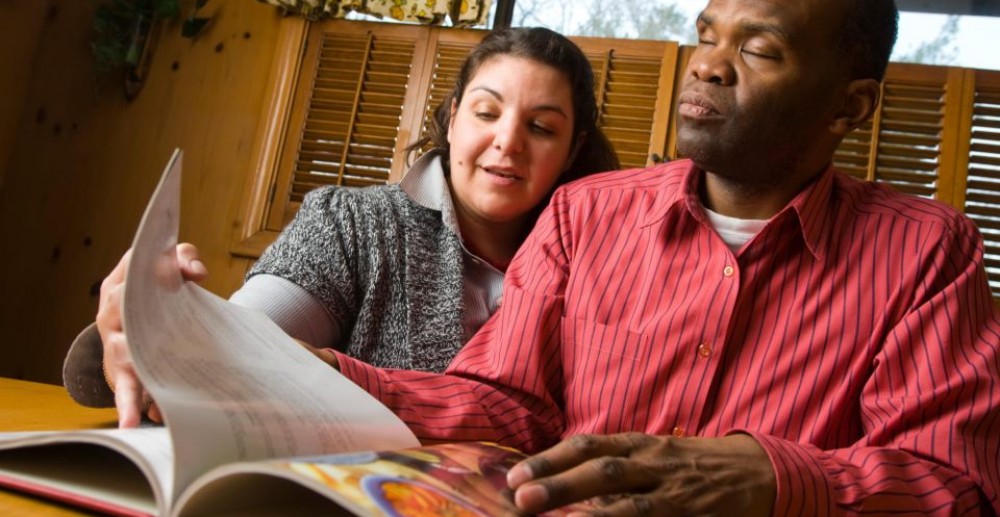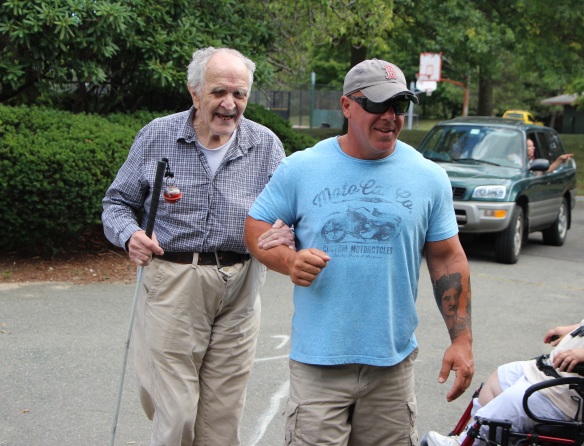
The fear of getting lost was one of the biggest challenges I had to overcome when I lost most of my eyesight 19 years ago. It took me months to feel comfortable just walking around my familiar neighborhood.
Once I had gained some confidence, I began to jog farther away from my home. My expeditions often led me to asking other pedestrians for directions in order to find my way back. It was frustrating to many times get ignored or get the wrong information. This all changed a couple of years ago when I got the Trekker Breeze talking GPS device from my local Department of Rehabilitation.
The Breeze has made a huge difference in my everyday life. This amazing handheld device audibly lets me know my exact location, as well as upcoming intersections, and location of landmarks and shops nearby. Gone are the days of guessing my stop when riding the bus. The Trekker’s step-by-step directions make it incredibly easy to find any address or place.
Earlier this year, while training for my first American River 50 mile Endurance Run, I relied on my Breeze to guide me to my favorite fire road trail which is in the Santa Monica Mountains. Although my wife and a friend were more than happy to give me a ride there, it was incredibly rewarding to navigate the meandering route to the trail by myself. As a result, I have now gained back a great deal of the independence I had when I was fully sighted.
The Breeze was designed as an orientation aid. It detects your location through the Global Positioning System, GPS, and relates it to the digital maps of your area. The GPS system uses electronic maps, saved in the SD card, to provide detailed and handy information about all street names and ranges of addresses, as well as points of interest such as banks, restaurants and pharmacies.

Using the Breeze, you can record new routes while walking them. The system then provides step-by-step instructions on how to navigate them. With Breeze you can explore your surroundings and let the system describe them as they’re found along the way. If you wish to return to your point of origin, Breeze can help you retrace your steps. The system also allows you to record landmarks and reference points along your route, and they’re announced as you go by them.
Taking all of these into consideration, I only have a couple of criticisms about the Breeze. This device already comes equipped with a digital map of your home state. If you travel out of state, however; you’ll need to purchase an additional DVD with the rest of the United States. Although the DVD is only $100, the SD card can only hold four state maps at a time. My second concern is how long it sometimes takes the Breeze to acquire the GPS signal. Depending on the sky conditions, it can sometimes take up to 10 minutes. This slight inconvenience, however, is no big deal when compared to the many benefits it offers. At a retail price of $499, this device is a worthwhile investment for any visually impaired individual seeking more independence.
This post was written by Adrian Broca.




![A photo of a smartphone in the LaunchGuide location, with a sign reading "BRAILLE TRAIL START" pointing to the phone in the wire guides and a caption on the photo that reads "[smartphone:] Welcome to the Dennis Braille Trail"](https://mabvi.files.wordpress.com/2015/12/launchguide.jpg?w=584)






